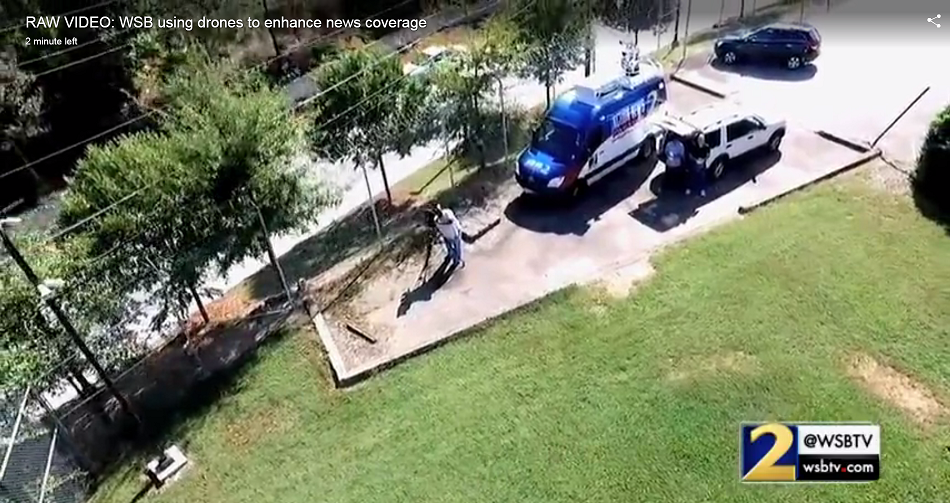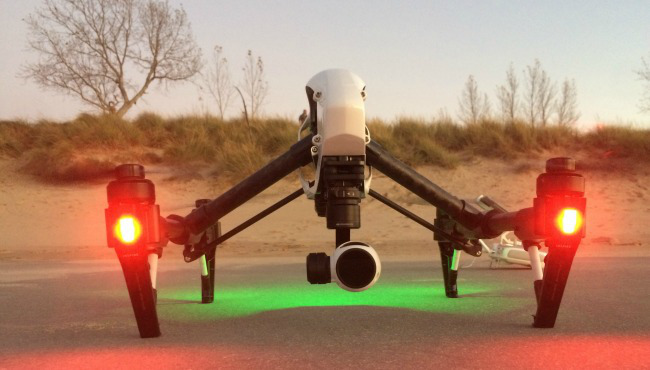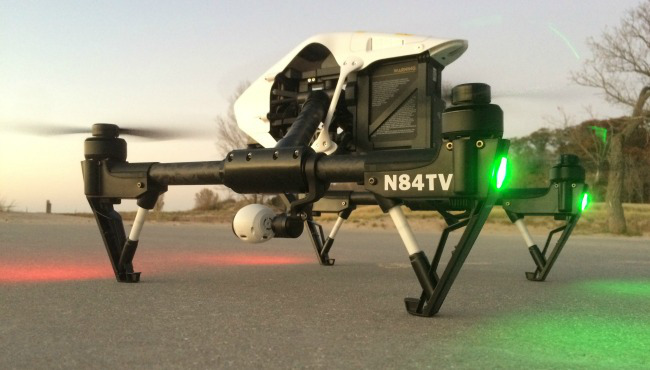Ever since the new Part 107 rule came into play in the United States, media companies have been scrambling to harness the power of drones and take their aerial photography to new heights. The recent legislation changes have put the power of pictures from above – something that was previously restricted to major media networks using helicopters – into the hands of any journalist willing to pass the Part 107 exam. TV stations drones are now entering the foray, specifically.
But drones and journalism isn’t necessarily a bold new combination. Before the legislation changes came in, the FAA had already granted over 3,000 exemptions to commercial operators, including the likes of news organizations CNN, and television stations in Cox Media Group, such as Atlanta’s WSB, Boston’s WFXT and Orlando’s WFTV. The drones were used to help with live reports, highlight weather conditions and provide scenic shots for features.

The difference is that now anyone can get involved, which is great news for ambitious startups and entrepreneurs looking to make a living out of aerial photography. In fact, a survey of media station directors in May, even before the new regulations came out, suggests that there’s a definite willingness to either arrange in-house aerial shooting for TV or pay external contractors to get it done.
The survey results highlighted that 23% of the nation’s TV newsrooms are currently using or plan to use drones, with nearly 30% happy to use drone footage shot by someone not employed by the station.
Sinclair adds TV station drones
The Sinclair Broadcast Group, which owns countless local news channels and television stations across the US, has recently announced the launch of drone teams in six markets, along with plans to have 80 trained and FAA-certified drone pilots in 40 markets by the end of next year. If that’s not a ringing endorsement for the future of drones in the TV business, we don’t know what is.
There’s no doubt that drones offer a cheaper way for aerial photographers to get their footage in the media. But it’s not just about the money. Two of the clearest benefits for drone photography on TV are safety and entertainment. In terms of safety, drones offer a practical and easy way for crews to shoot scenes that might otherwise be dangerous.

For example, CBS News used a drone to film a manhunt from above in Dannemora, N.Y. last year, after two prisoners escaped from the Clinton Correctional Facility last year. “The ground shots up there can only tell so much of the story,” said Tim Gaughan, CBS News’ vice president of newsgathering. The drone got us something that a traditional camera could not, and we could not rely on a helicopter.”
Put simply, drones can go where a crew couldn’t. Another example would be NBC News, which has used drones to record the effects of earthquakes in Italy, as well as floods in Louisiana.
TV station drones and drones in the media- what about privacy?
Amid all this talk of eyes in the sky and media crews piloting drones all over urban areas, it’s easy to forget one issue that will pop into the head of many civilians: Privacy. There’s already plenty of skepticism from the public surrounding how drones represent an invasion of privacy. There have even been reports of angry neighbors shooting them down if one strays too close to their yard.
Fortunately, while the Part 107 Rule does open up commercial flights for budding aerial photographers, it doesn’t do so at the expense of the public’s right to privacy. Flights over people not included in the operation remain banned without a specific waiver from the FAA, and it remains against the law to fly in densely populated areas or beyond the pilot’s line of vision.
With those facts in mind, TV news crews are still going to be restricted in terms of what and when they can film. Without a waiver and explicit permission to do so, thankfully we’re still a long way from TV stations having free reign over what they can film from above. Aside from that, you can expect to see plenty more drone footage on TV in the form of natural disaster reports, the odd sporting event, and plenty of sweeping landscape shots.
